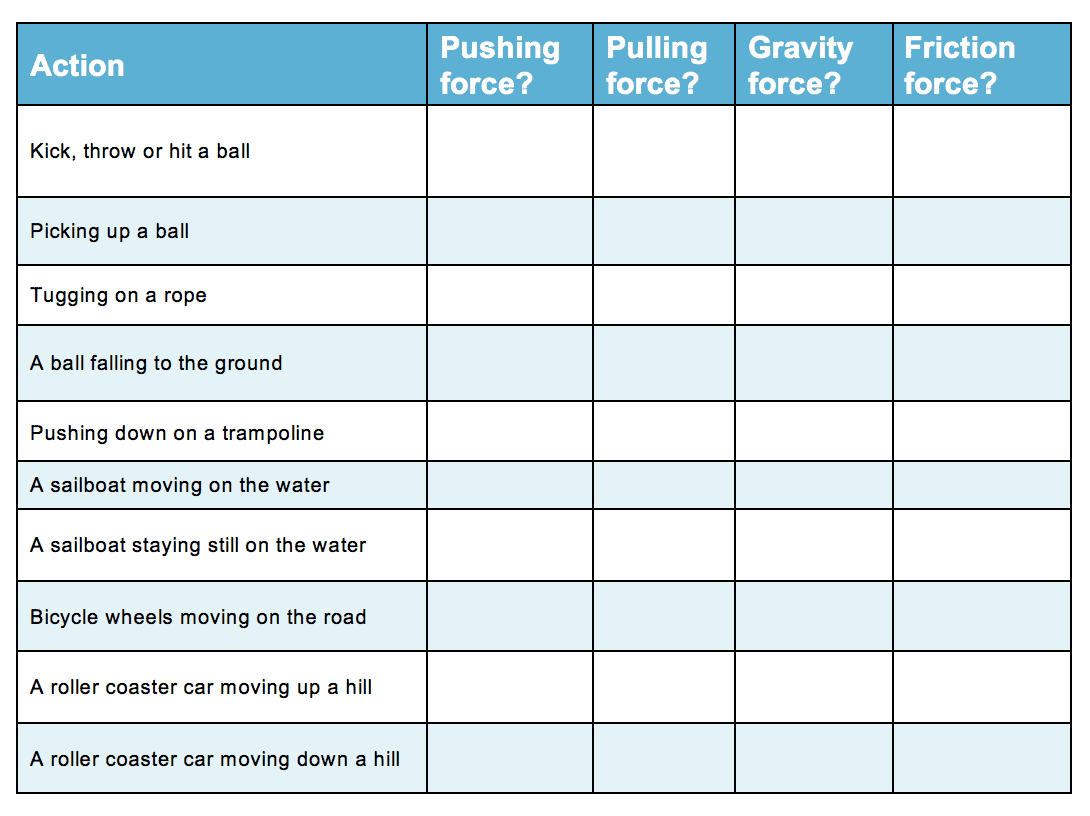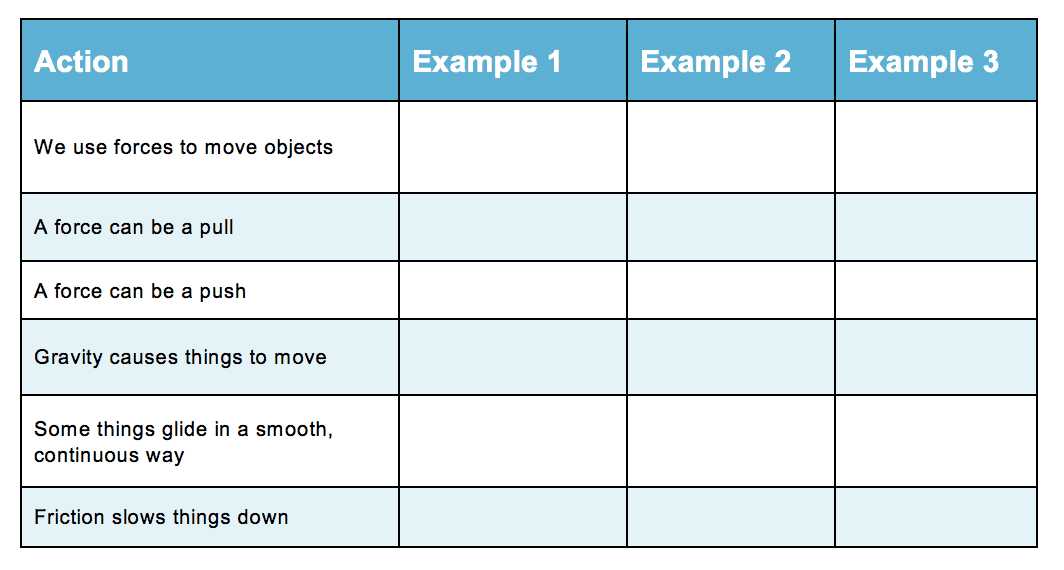Information for Teachers
Curriculum links
This investigation is linked to the following Grade 3 Next Generation Science Standards.
PS2.A: Forces and motion
All movement happens because of the application of force
Gravity is a force that exists between all things (3-PS2-1)
PS2.B: Types of interaction
Pushes and pulls must overcome gravity and friction to move objects (3-PS2-1)
EST1.A/B/C: Defining problems, developing solutions and optimizing the design solution
Possible solutions to a problem are limited by available materials and resources
Research on a problem should be carried out before beginning to design a solution
Different solutions need to be tested in order to determine which best solves the problem (3-5-ETS1-3)
How to search the internet
1 Keep your request short
Fewer words will give a more accurate search.
2 Choose exactly what you want
For example: Arctic Circle Climate
3 Use quotes
Double quotes around a set of words tell the search engine to consider those exact words in that exact order without any change. For example: “Arctic Circle Climate”
4 Use the plus sign (+)
If you add a plus sign (+) between words, the internet will search for all the words. For example: migrate+birds+whales+mammal
5 Use the minus sign (–) to say what you don’t want
Use a minus sign (–) to show words you do not want to appear in your results. For example: if you search for burrowing animals and do not want mammals in your search, –mammals will exclude mammals. Note that you need to put a space before the minus sign for the word to be excluded.
6 Be very clear about what you don’t want
Part 1
Ask questions and define problems
After reading Everything Moves, you may have many questions about the different ways things move and what causes them to move.
List your questions
• Compare your list with questions that others have.
• Choose a question you would like to investigate.
• You can work alone, with a partner, or in a small group.
You may want to choose one or more of these questions to investigate
Q1. What causes things to move?
Q2. What are the different types of motion?
Q3. What forces slow things down or make them change direction?
Go to Part 2 Investigate →
Part 2
Investigate
Helpful websites
You may want to use websites to help with your investigations.
You can use words like these in your search:
How+things+work
Physics+kids
Gravity+kids
Go to Part 3 Record data →Part 3
Record data
Find a way of recording your information that will allow you to see any patterns in the data.
Data Chart for Everything Moves
Decide which force happens in these activities.
(Download and change to suit your information)
 Download Chart
Download Chart
Go to Part 4 Organize, analyze, and interpret data →
Part 4
Organize, analyze, and interpret data
1. Look over the information you have gathered and the patterns you have found.
What causes things to move?
What are the different types of motion?
What forces slow things down or make them change direction?
2. Search for other patterns.
How does friction work?
How does gravity work?
Why do pushing and pulling forces need to overcome gravity and friction?
3. Makes notes about what you find.
Go to Part 5 Present and share →Part 5
Present and share
Look over all of the information that you have gathered in your investigation.
What are the most important ideas about the ways things move in different ways, slow down or stop?
Make a chart showing the most important ideas.
Share your findings with another person/a small group/the class.
 Download Chart
Download Chart
← Return to menu